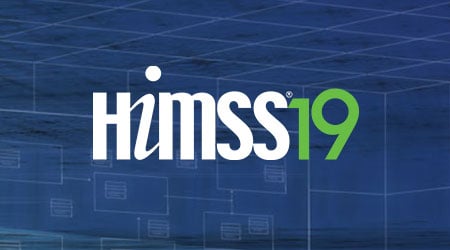Continuing our recap of #HIMSS19, today we dive into another couple of the high-priority topics.
Provider Burnout
How could this NOT be a topic of conversation, after all the attention it got in the second half of 2018? Numerous surveys and reports surfaced after a notable rise in the number of clinicians abandoning their trade, dealing with inflated stress and time commitments, and in a number of cases even suicide. The 2019 National Physician Burnout, Depression & Suicide Report found bureaucratic tasks like paperwork and EHR documentation as the leading causes. Another report, found that for every hour physicians provide direct clinical facetime to patients, nearly two more hours is spend on EHR and desk work, and that providers routinely take home 1-2 hours of work each evening as well. It’s clearly not a sustainable model our caregivers are working in at present. The EHR has the potential to do many incredible things, but at its core it is an administrative machine. What has been framed as part of healthcare’s technological revolution, while meant to aid clinicians, has in many ways actually become part of the problem rather than the solution. The next chapter in the age of computerized healthcare is to harness ways to make the computer work for clinicians, not vice versa. We help in this space by offering projects that focus on provider efficiency metrics along with Epic improvement and click reduction - leveraging automation, utilizing features to full capacity, ensuring training and education programs are sufficient, and placing a higher degree of importance on system design to eliminate duplication and clutter. And that is just one of the pathways that can help to provide better experiences for the doctors we put our trust in regularly. If you haven’t had a chance to read Dr. Gawande’s article from the New Yorker, which frames this topic in greater detail and context, it is well worth your time and can be found here.
Big Data & Clinical Informatics

The rise of “Big Data” has been cited for years now as a catalyst for healthcare innovation and organizational transformation. And with a number of robust enterprise analytic tools now on the market and in mainstream use, we’ve reached a point where everyone seems to be saying “yes, the data is important, but I want to see the results of what it is being used for…what are we actually starting to achieve?”. While the insights we gain will continue to evolve, #HIMSS19 was evidence that the massive amounts of data organizations are now collecting are in fact beginning to provide tangible benefits. Many success stories were highlighted from arenas such as clinical decision support to cost and quality of care. We are seeing how length of stay and readmission rates can be driven down, along with costs, how organizations can best incorporate social and demographic dynamics into care, and other initiatives that result in better health, with less variation, at lower costs. Data has led to stories such as this, where we’ve been able to reduce the number of avoidable adverse patient events, which has led to an estimated 7.7 billion in cost savings over 4 years. Despite the successes noted to date, there’s still a ways to go. Many feel that we are still “data rich, information poor” and that notion is not without it’s merit. It is not yet quick nor easy to combine, synthesize, and evaluate all the data available in its proper clinical context. To hear more from us about some of the success stories shared this year at #HIMSS19, and to hear about our own experiences helping clients use analytics in tandem with their Epic data to gain insights and make improvements, let us know you are interested and we will be happy to advise. We’ve worked on analytical initiatives from infectious disease, to medication & opioid management, to hospital acquired condition metrics, to early Sepsis and fall safety warning programs. The sky truly is the limit for what we can do with the data in front of us, but it takes the right skills and the right people to strategize the efforts that will ultimately lead to the “aha” realizations we are all looking for.

That’s all for Part II of our #HIMSS19 recap, stay tuned for one more summary in the days to come, and if you’d like to collaborate further on either of today’s topics, reach out to our clinical solutions team.

 (310) 699-2017
(310) 699-2017
 info@thewilshiregroup.net
info@thewilshiregroup.net